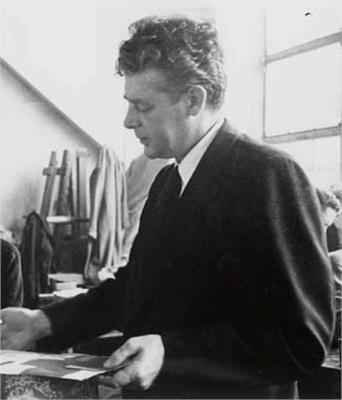Burgoyne Diller (1906 - 1965) Works

Burgoyne Diller (1906 – 1965)
Born in New York City in 1906, Burgoyne Diller began drawing when he was stricken ill for a year as a teenager growing up in Battle Creek, Michigan. He would later attend Michigan State University in East Lansing, often spending his weekends at the Art Institute of Chicago, where he acquainted himself with Impressionist and Post-Impressionist painting.
In 1929, Diller moved back to New York City, enrolling at the Art Students League, where he studied under such progressive painters as Jan Matulka, Hans Hofmann, and George Grosz. Diller completed his studies at the League in 1933, the year he had his first solo exhibition at the Contemporary Arts Gallery in New York. It was around this time that his artistic practice became particularly influenced by the geometric compositions of the De Stijl movement and Piet Mondrian. As Diller developed his style, he brought a unique combination of Constructivist style with his own personal approach to line, space, and form.
Diller promoted abstract painting through his employment as the Director of the Mural Division of the Works Progress Administration’s Federal Art Projects until 1940, aiding and commissioning many fellow abstract artists during the 1930s. Additionally, Diller was a founding member of the American Abstract Artists (established in 1936), exhibiting with that group from 1937 to 1939.
In 1945, Diller joined the design department at Brooklyn College, remaining there until 1964. Since his death in 1965, Diller's work has been shown in many exhibitions devoted to modern art movements in the United States. There have also been several posthumous exhibitions, including a major retrospective at the Whitney Museum of American Art in New York in 1990.
Photo Source: WikiArt

